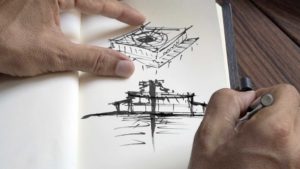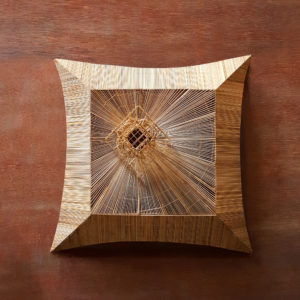Indian architect Bijoy Jain designs Melbourne’s MPavilion, an annual high-profile design event staged at Queen Victoria Gardens.

Every autumn, design behemoths and emerging talent come together in Melbourne for MPavilion, to think, strategise and network. This year is special for India. Studio Mumbai, run by avant-garde architect and designer Bijoy Jain has been tasked with the crucial job of designing MPavilion, a temporary pavilion for the Queen Victoria Gardens, in the center of Melbourne’s Southbank Arts Precincts.
Initiated by the Naomi Milgrom Foundation with support from City of Melbourne and the Victorian State Government, every year for four years an outstanding architect is commissioned to design a temporary pavilion for the Queen Victoria Gardens, in the center of Melbourne’s Southbank Arts Precinct. An event hub, a meeting place and an invitation to experiment, each MPavilion brings creative collaborators together to present a free, four-month program of talks, workshops, performances and installations from October to February.

The foundation recently released the design for the pavilion: a bamboo structure, 12 meters in height, with an earthen roof intended to represent the Australian landscape. Similar to a tazia-a ceremonial tower commonly used in Indian festival processions-the pavilion is topped with a complex tower made in Bharuch by a family that specializes in the ancient craft. “I want it to be a symbol of the elemental nature of communal structures,” said Bijoy Jain. “Like Naomi, I see MPavilion as a place of engagement: a space to discover the essentials of the world – and of oneself.” Jain’s approach to design that reflects a deep concern for craft, sustainability and community, is what made the Naomi Milgrom Foundation call on him to design the 2016-17 pavilion. The US-trained Indian architect’s reputation rests on exquisitely detailed buildings – homes predominantly – that combine a modernist rigor with traditional Indian craftsmanship.

For the past six months, Jain and his team of craftsmen have tested the pavilion through a series of models and full-scale prototypes. A group of Australian builders even traveled to Mumbai to take part in Jain’s collaborative approach to construction. The awning and roof cladding panels are constructed using a traditional Indian technique whereby a mixture of cow dung and earth are tied to the bamboo structure and covered in a waterproof white lime daub. “I wanted to create a space that connects the entire culture of the land. The tower or ‘tazia’ is an imaginary building that reaches deep into the stars, so it is otherworldly, and through it you can see the stars, the sky, other dimensions.”
Jain holds that a building is like a body. It breathes and is permeable. His architecture offers shelter but never shuts out nature. Set in predominantly lush coastal Indian settings, his buildings, constructed from local materials, respond to the tropical climate. They not only use inner courtyards but the main dwellings, such as the Palmyra house often avoid windows, opting instead for timber battens and shutters. In India 300 million people right now live outside the economy of building and industry and live with great pride and dignity,” he says. “It’s not something of the past. It’s not some dream, it’s real. They use resources that are immediately available to them. Our understanding of poverty and poor is just based on money.”

Jain was born in Mumbai, in 1965. In his pursuit for education he traveled to the United States to gain his Master of Architecture from Washington University in 1990 and, following the completion of his studies, went on to work under prominent abstract artist and architect Richard Meier. He worked in Los Angeles and London between 1989 and 1995 and returned to India in 1995 to found his practice, Studio Mumbai. The atelier’s celebrated projects include Copper House II, Palmyra House, Ahmedabad House and Saat Rasta. Bijoy Jain’s work stands at the vanguard of the handmade architecture movement, and has been exhibited at the Venice Architecture Biennale and the Victoria and Albert Museum, London. He was recently awarded the Grande Medaille d’Or from the Academie D’Architecture in Paris in 2014.


